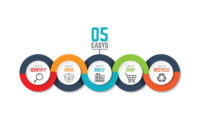Are Consumers Experiencing Green Fatigue?
Tired of claims? Your consumers are too: Why sustainability isn't working for your brand.


Sustainability is an integral part of Bournvita’s brand identity, not a tacked-on claim, which allows the product to resonate with consumers. All images courtesy of bluemarlin.

The Ecobox replaces millions of non-recyclable bottles per year while reassuring customers of its superiority.



Raise your hand if this challenge sounds familiar: You make sustainability in your packaging a priority; you drive green innovations in your packaging designs, and you roll out your new packaging to consumers. But the sales numbers don’t show an increase. For the majority of brands, where the primary consumer isn’t considered LOHAS (lifestyles of health and sustainability), this is likely the reality.
The truth is green fatigue is very real. Consumers are confused by the proliferation of green messages and labels; they don’t know how to evaluate if something is “greener.” Some consumers still perceive green products to be lower performers and/or cost more. For some categories, the challenge may be that sustainability per se just isn’t top of mind. If price is customers’ main driver, sustainability will only resonate with them when the initiatives actually result in more competitive pricing, i.e., you get the “green” for free, or it costs less.
So, if you’re relying on claims or labels to communicate your message, your green marketing isn’t working.
But consumers continue to articulate a concern about the environmental impacts of packaging, and many say they want to buy greener products and support responsible companies. This is the core of the challenge. Not surprising, if upper management doesn’t see bottom-line benefits from promoting sustainable initiatives or features, they conclude investing in those initiatives has no business value and pull back from supporting them. How do we balance the market desire for more sustainable products with the gap in sales response?
In a session at PE’s Product Sustainability Round Table last year by Good Inc., the primary message was “Marketing is B2B. Storytelling is B2C.” Consumers aren’t looking for numbers, technical specs or ambiguous claims. They want stories they can connect to. They want to engage. And the only way you can tell a good story, one that resonates and prompts action, is if you know the audience and what is important to them.
Think about some of the major new approaches to brand promotion in recent history — TOMS, Pepsi’s Refresh Project, Cheerios, “define a flavor” crowd-sourced initiatives, etc. These brands are successful with their engagement effort because they are tapping into something the consumer can feel directly connected to. Consumers personally feel like they are the ones making a difference by raising money for their community, sending shoes to a person in need, connecting with loved ones, reshaping the market and so on.
The brainprint concept coined by sustainability communications agency Futerra helps explain this. We all know what the footprint of a product means; the brainprint, Futerra proposes, represents how a product or brand makes consumers feel about themselves and the broader world, in terms of their experience, status and alignment with social norms. The more you can drive positive movement on these things, the more connected to your brand a consumer will feel.
In reality, the nature of your category and the legacy of your brand will have something to do with this engagement as well. Those who attended last year’s Packaging That Sells will remember this from Idea Couture CEO Idris Mootee’s keynote. Consumers make purchases differently based on the category — some require more thinking, some are more emotional or impulsive. Some brands transcend the category: People who buy a Dyson are buying what they perceive as the best technology — they aren’t just buying a vacuum.
When contemplating sustainability, don’t take a different approach to thinking about sustainable packaging than your other packaging considerations. We experience many companies who have boxed in their interpretation of what sustainability can mean for their packaging. It doesn’t have to only be about recycled-content packaging and soy-based ink labels (though these can be meaningful efforts, if they address key impacts of your packaging system). Sustainability is about meeting the needs of today’s generations without compromising the needs of the future. When you’re driving sustainability in your packaging, don’t forget: How can you best meet all the current generations’ needs?
In the collective experience of the authors of this article, smarter manufacturing and inspired design pays handsome dividends. Clients save money, grow market share, and increase profits. Consumers embrace change and become more brand loyal.
But sustainability doesn’t mean anything if it’s only on the surface. You have to put real, meaningful change at the heart of your brands to make the kind of difference the planet deserves and to which consumers respond.
So how do you do it?
All companies want to sustain into the future. Being cognizant of your consumption of resources and impact on people and planet is increasingly critical to that goal. Sustainability is therefore core to every business. You need to define which aspects are core to your company and business objectives, and then use that knowledge to create packaging and other marketing that will resonate with your customer.
One way to create meaningful change that will resonate with consumers is to focus and strengthen brand identity. A great example of this is Cadbury Bournvita, a malt food drink that has been providing nutritional benefits to India’s children for over 50 years. Bluemarlin was tasked with redefining the brand with an identity that embodied positive change and emotionally connected with an Indian mother’s concern for her children’s future. In addition to graphics that convey vitality, positivity and empowerment, the agency created a new structure that uses 25 percent less plastic. This led to a savings of a million dollars in manufacturing costs as well as 404 tons of materials. While Bournvita’s optimistic message is explicitly communicated on the pack, the environmental benefits align directly with the brand’s mission for positive change and concern for the children of India’s future. Thus, sustainability is not an added-on benefit; it is part of the overall brand strategy.
Another notable example began five years ago when Shell came to bluemarlin with its biggest-ever packaging initiative. It was a complex, multi-layered brief with clear objectives, including rationalizing packaging formats, improving sustainability and manufacturing and supply chain efficiencies, and reducing material usage. The strategic design solution used 11 percent less plastic than the previous design and reduced the number of structures by 39 percent, taking the equivalent of 45 million plastic bottles out of the annual production cycle. Clearly, Shell’s sustainability objectives were achieved, but more interesting to note was the domino effect of additional benefits. In the first year alone, Shell saved over $250 million. The new structure offered improved functionality, and Shell Lubricants grew 12 percent in volume in the year following launch. The commitment to sustainability dramatically changed the brand and business on several levels.
Kraft worked with PE International to quantify the improvements made to a B2B product, which it had redesigned to achieve better customer performance as well as reduce material cost. The resulting design — called YESPack for its increased yield, ease of use, and sustainability — showed significant environmental savings, but the design itself was also smart enough to become award-winning. The combined story was a win-win for its institutional customers, and Kraft saw a significant increase in sales.
Another project that bluemarlin did with Shell was Ecobox, an innovative product designed specifically for Walmart’s Tire and Lube Express facilities. The previous operation was in desperate need for change as it was using 50 million non-recyclable bottles of oil a year — clearly no good for the environment or consumer perception. Bluemarlin’s radical solution was to do away with the bottles completely by supplying the oil in bulk using a bespoke “bag in a box” and employing a reusable jug. The result is zero wasted oil and zero waste sent to landfills as all the elements involved can be recycled. However, Ecobox involved the additional challenge of convincing the consumer that this new system was more effective as well as environmentally beneficial. The transition from the old process to this new system needed to be seamless and superior for the consumer to adapt to it, embrace it, and continue to use it. Not only did Ecobox deliver significant results in reducing plastic and oil from the waste stream, but it also improved speed. This led to Shell Lubricants being named supplier of the year for sustainability by Walmart at the company’s annual Supplier Summit.
In summary, think about sustainable packaging the way you think about everything else: Consider your consumer’s values first — family, health and well-being, friendship, self-expression — all in the context of why they buy your product. Build a brand and a persona that speaks to these values. Build the underlying foundation of environmental performance that matters to your customers. Make sure you’re walking the talk: Nothing’s worse than saying “safe and pure” and not knowing whether it actually is safe and pure. This means understanding your impacts on the environment and having initiatives and targets to help reduce that impact. Not sure what the impacts of your packaging system are, or how that consideration should fit into your overall strategy? Check out PE’s whitepaper on the “5 Steps to Sustainable Packaging” published in 2013.
Then use your understanding of the consumer to get creative in communicating your brand promise. We are in the privileged position of being able to help safeguard the health of our planet. We literally can change the world. Let’s do it.
Looking for a reprint of this article?
From high-res PDFs to custom plaques, order your copy today!








